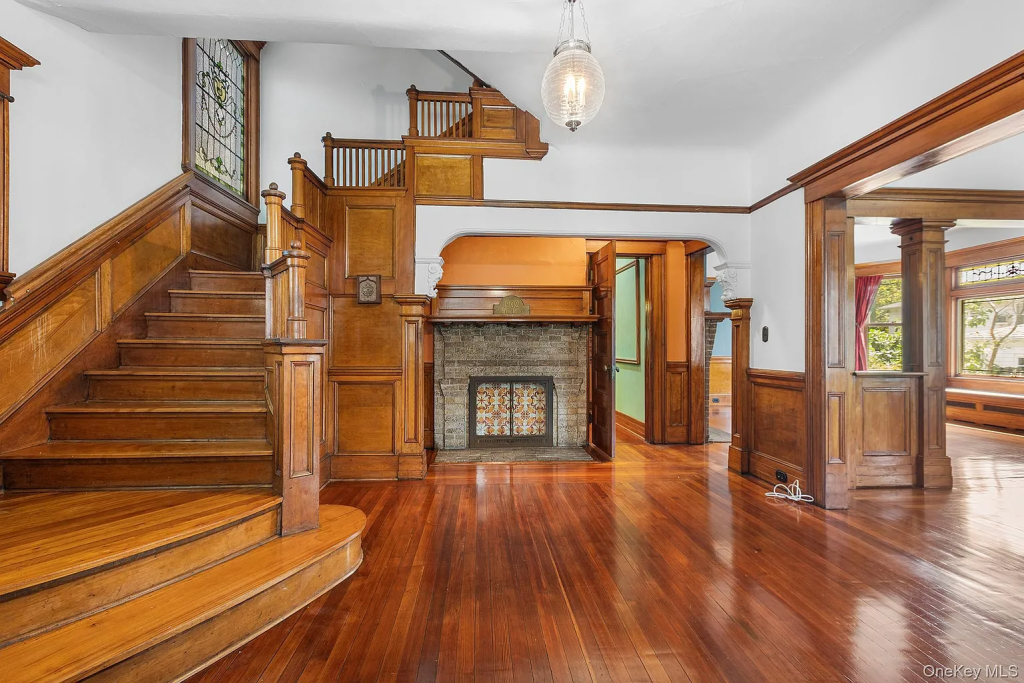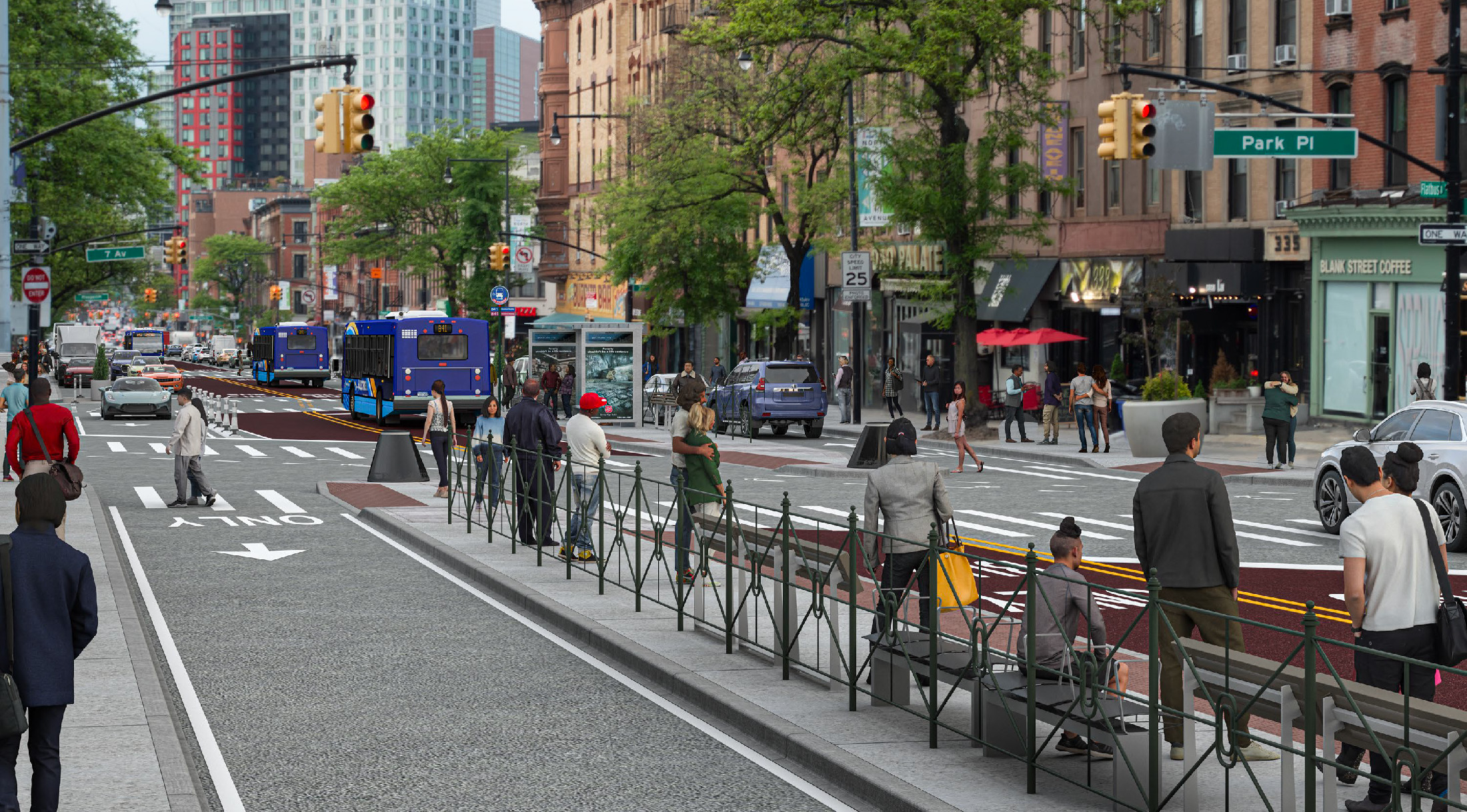Hotel Handout, Few Affordable Phase 1 Units at AY
Sarah Ryley over at the Brooklyn Eagle’s been digging through the recently-released Atlantic Yards documents and finding some interesting things. In an article online yesterday, she wrote that the Forest City Ratner would be selling the rights to build a hotel within Miss Brooklyn for $28.8 million. “Basically, it’s eminent domain being used to give…

 Sarah Ryley over at the Brooklyn Eagle‘s been digging through the recently-released Atlantic Yards documents and finding some interesting things. In an article online yesterday, she wrote that the Forest City Ratner would be selling the rights to build a hotel within Miss Brooklyn for $28.8 million. “Basically, it’s eminent domain being used to give the land to Ratner for free,” commented Dan Goldstein. “Then he gets to sell it, which again is pure profit to him as opposed to the state and the city. In a separate article, Ryley also notes that less than 10 percent of the first-phase apartments—143 out of 1,580—will be low-income units. Another 216 apartments will be for middle-income earners. “The so-called moderate-income properties are way beyond the incomes of the vast majority of residents in my district, so to call those units affordable is laughable,” said City Council Member Letitia James.
Sarah Ryley over at the Brooklyn Eagle‘s been digging through the recently-released Atlantic Yards documents and finding some interesting things. In an article online yesterday, she wrote that the Forest City Ratner would be selling the rights to build a hotel within Miss Brooklyn for $28.8 million. “Basically, it’s eminent domain being used to give the land to Ratner for free,” commented Dan Goldstein. “Then he gets to sell it, which again is pure profit to him as opposed to the state and the city. In a separate article, Ryley also notes that less than 10 percent of the first-phase apartments—143 out of 1,580—will be low-income units. Another 216 apartments will be for middle-income earners. “The so-called moderate-income properties are way beyond the incomes of the vast majority of residents in my district, so to call those units affordable is laughable,” said City Council Member Letitia James.
Ratner May Net $30 Million On Sale of Arena Hotel [Brooklyn Eagle]
Few Affordable Apartments for First AY Tower [Brooklyn Eagle]





Why can’t affordable housing be built in low-scale development? It has been done quite successfully.
And by virulent, David, I didn’t mean you — I was referring more to the Reality Bites type of diatribe.
These theoretical agruments are all very well and good, but in the real world there are other considerations beyond economic absolutes.
Ebbets Field Houses were not built as a public housing project (they were actually considered as quite nice when they were first built) and are still not public housing. A not-charming place they may be, because of 1. their out-of-scale size and 2. white flight from the surrounding area spurred by an influx of minorities.
And Lincoln Center, Carnegie Hall, etc., are very different from a sports arena. And I don’t think many people live near the Javits Center.
Babs – I am really not sure I know that…. and I as probably the most “virulent AY proponent” on this board (at least not posting as anonymous), I have never advocated that AY should be built to bring in more rich people (of any color).
What I have advocated and which based on economics 101 is actually economically/intellectually honest – is that the best way to create ‘affordable’ housing is to help alleviate the cause of high prices – inadequate supply.
and in order to create supply efficiently, tall buildings work best (economies of scale) and in order to build these tall buildings with the least amount of environmental damage, you should build them as convenient to mass transit as possible (and above a hub with more train lines then any other in NYC is as convenient as you can get). All these other arguments are simply distractions from these very simple and well established principals.
Yet in your own post you take two essentially contradictory positions (or at least two positions that have diametrically opposite effects) – you want MORE affordable housing and less tall buildings? Don’t you see how contra-intuitive that is?
Great post city boy.
babs, you wrote:
“…what rich person (or anyone else for that matter) seriously wants to live next to an arena?”
How about this? Tear down a ballpark and replace it with public housing — like the Ebbet’s Field Housing project.
Which scenario would contribute to a better city? Replacing a ballpark with public housing whose residents put heavy burdens on every social service dreamed up by advocates for “the poor”
— or a mixed-use project that required its occupants to pay for everything?
The Ebbet’s Field project scared off development in the area for decades. There’s still very little happening nearby. But the price of homes in the area is rising in response to the lessening of social pathologies in the area.
You asked:
“Would you like to live next to Madison Square Garden?)”
Somehow, I think the answer to that question will become “Yes”. Do people dislike living next to Lincoln Center? Carnegie Hall? The Met? Grand Central? The Javits Center?
I’ve seen no protests.
and i thought y’all liked my type
I’m still agog at Reality Bites’ rant, followed by 12:40’s diatribe, which I think is by the same person.
I’m not going to waste my time arguing with that, it kind of stands on its own as a testament that serious, deep in the bone, racism is not dead. Often when minorities and other progressives even mention the word, we are pooh-poohed by the mainstream as being paranoid. Well, here you go. What do you need, a KKK parade down Flatbush Avenue? There are some truly scary people both in this city and on this blog.
David, we often don’t agree that the sky is blue, but kudos for rejecting such shite. Much respect. Babs, SPer, bren and others, thanks for for being voices of reason. This goes way beyond agreeing or disagreeing about AY.
I am not outraged by it (although I mostly dont agree with it) – what I am outraged by is the totally intellectually dishonest arguments made by AY opponents and their hypocritical positions when it comes to the environment, social welfare, property rights and Government policy.
Oh, please, David you know that’s so not the case — whereas the very virulent AY proponents on this site seem to be pushing for it as a way to bring more, not fewer, rich and probably white residents to this area. (Which, BTW, I sorely doubt would be the case — what rich person (or anyone else for that matter) seriously wants to live next to an arena? Would you like to live next to Madison Square Garden?)
The problem is that there ISN’T ENOUGH affordable housing in the project — and what there is isn’t actually affordable for many folks.
And I agree — big public housing projects aren’t the way to go, only trapping the poor in a cycle of isolation and desolation. A true mix of housing would be better — and not packing people on top of each other in huge towers, either.